Kegging!
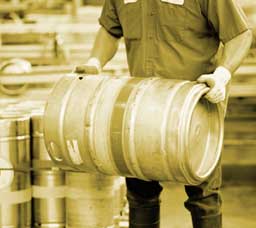
Note: Looking for Kegerator Info? Try Here
Many home brewers tire of washing bottles. It’s only natural. Many start by using ~50 12oz bottles per batch, then move to ~25 22oz bottles. Washing bottles, removing labels, and scraping that crap out of the bottom is no fun. When you’ve had enough, its time to keg!
Home brewers typically use Cornelius style kegs, which are commonly used for soda. These are great because they are 5 gallons (same size as the batch), and they are easy to clean, relatively cheap, and are portable. Many a home brewer was at wits end before buying a kegging system.
Kegging systems are somewhat expensive, so its best to start of with bottles, but if you love brewing, and you love having fresh beer at your fingertips, kegging may be for you. It can cost nearly $300 dollars to get into kegging, but there are many ways to reduce the cost (safely).
Parts:
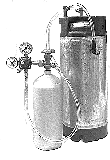
A kegging system involves a C02 canister, a dual valve regulator, an air hose with clamps, a Cornelius keg, a beer line, and a faucet. This image should give you an idea of what is involved.
The item on the right is a typical 5-gallon, or 1/6 barrel Cornelius keg. You can usually find used kegs at your local home brew store.
The item on the left is a 5-pound Carbon Dioxide tank with CO2 regulator.
Carbon Dioxide:
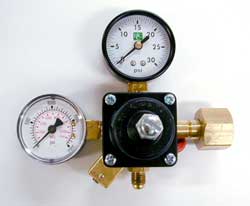
Carbon dioxide is naturally produced as a byproduct of fermentation. This carbon dioxide is how beer is carbonated in bottles. It usually takes 2 weeks or more to get good carbonation in a bottle.
Kegging only requires 2 days of waiting after your beer is done fermenting. You can force carbon dioxide into the liquid, thus shortening the painful wait.
This item is a CO2 regulator. It shows both the pressure of gas in the tank (left) and the pressure going to the keg (top). It is important for the safe use of the gas. You should do plenty of reading before you undertake this alone.
Fittings:
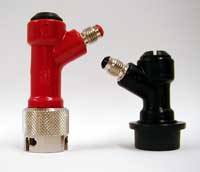
Cornelius Kegs are unique because of their fittings. They use ball-lock type fittings, and are different from commercial kegging equipment. These fittings attach to the keg, and have hoses running to either the gas (red) or the tap (black). Having good fittings is important so you don’t have a gas leak, or a beer leak. Unbelievably, a gas leak is worse. CO2 can be dangerous at high concentrations, so you should be familiar with working a kegging system beforehand.
Faucet:
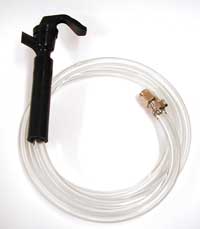
This is the typical Cobra-style faucet used in home brewing. It is good for portability, and you probably recognize it from parties. The downside to a cobra-style fitting is that it must remain inside the door of the refrigerator, requiring you to waste cold every time you refill your pint.
Door mount faucets are available, and add great aesthetic value to your otherwise dull refrigerator. You can also add many different kinds of pulls (levers) to a door faucet, like those found in bars. Check out the Kegerator section for pictures.
More Info:
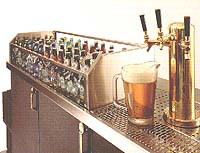
If you want more information on kegging, check out these links. They include cleaning and care of kegs, making a kegerator, and other fun stuff.
Remember, kegging involves the use of pressurized gas. Use extreme caution while handling tanks and transferring gas. Consult with your local brew store, and other manuals before kegging yourself.